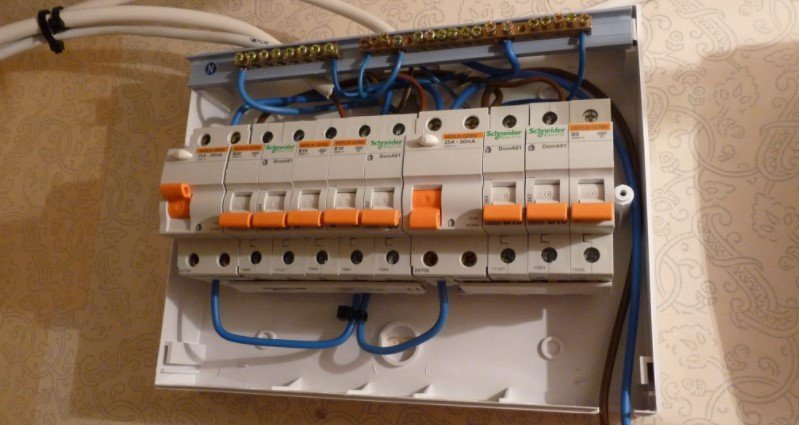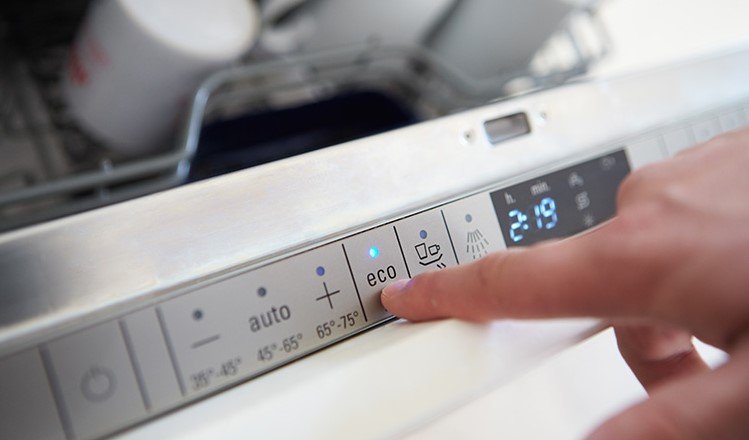Once I’ve heard someone saying “dreams about the future are always filled with gadgets.” With all the gadgets and modern kitchen appliances, it’s no surprise that this single room accounts for a hefty portion of an average home’s electric consumption. It’s easy to overload your breakers and cause your power to go out if you do not know how many amps does a dishwasher use.
The average home dishwasher usually draws 10 amps. However, it is crucial for your dishwasher to be on a 20- or 15-amp circuit if you want to avoid electrical overload.
You may be surprised by the amount of power your dishwasher consumes, but does the amount of power differ with each model? To come up with the answer, we reviewed several dishwasher models.
What is an AMP?
An ampere or AMP represents the rate at which electrons flow in a conductor. The ampere unit of electrical current represents one coulomb of electrical charge (precisely, 6.24 x 1018 charge carriers) passing by a point every second. Generally, currents flow from positive to negative points in physics, commonly referred to as conventional current or Franklin current.
Why Does AMP Matter?
During the design process of an electrical system, it’s critical to take amps into account so that the right size of wire can be identified. This is a requisite to maintain safety. Below are the points that shed light on why AMPS are of context.
Greater Amps Require Larger Wires
It is important to remember that the higher the amps, the larger the wires that need to be installed to ensure the system’s safety. Wires and cables need to be sized properly not only in order to deliver quality energy but also so that they do not spark or catch on fire.
Higher Amps Run the Risk of Voltage Drop
When the voltage of a cable at the end falls below the beginning count, a voltage drop may occur. This drop is likely when a very long cable runs to its end, for example.
By increasing the diameter of the conductor (or wire), voltage drops can be reduced easily. Electrical cables provide resistance to circuit flow. When designing your electrical system, you should take whatever measures you can to minimize that resistance.
Lastly, people are trying to conserve battery power as much as they can for RV and boat applications. Because of this, it is essential to keep in mind that higher amps consume more battery power.
Voltage decreases as Amps increase
Usually, high amps aren’t regarded as a good thing since they require huge wires and devices. In order to reduce the size of wires, an increase in voltage will lower the amperage for producing the same power supply. For example, 120 Watts at 12V require 12 Amps while 120 Watts at 24V require 6 Amps.
As you design your electrical power system, you should be mindful of the fact that running long, thick, heavy wires will add weight to your system. Due to their inherent lack of flexibility, the wires can also be quite a challenge to work with.
How Many Amps Does a Dishwasher Use?
It usually takes 10 amps to run a typical home dishwasher. To prevent electrical overload, your dishwasher needs to be on a separate circuit of 15 or 20 amps. Depending on the brand and model, amp consumption will vary.

First, let’s see the average amperage usage of dishwashers from different brands:
- Bosch – 12 amps
- KitchenAid – 15 amps
- Kenmore – 8.2 amps
- GE – 6.6 amps
- LG – 15 amps
- Black & Decker – 12 amps
- Maytag – 15 amps
You may also want to look up the best bets in Low Water Pressure Dishwasher aside from its amperage consumption.
What Size Breaker for Dishwasher?
According to GE Appliances, it is possible to use either a 15 amp or 20 amp circuit for the dishwasher. Depending on how much power your dishwasher needs, you might choose one of these. However, the National Electric Code (NEC) requires a 15-amp breaker for a dedicated dishwasher circuit.

Can A Dishwasher and a Refrigerator Be on The Same electrical Circuit?
Putting a dishwasher and refrigerator on the same electrical circuit is highly discouraged as that can turn out hazardous. If you take into account how many amps each one needs, you will see that your breaker box only has a circuit breaker that can handle 15 to 20 amps. On average, your dishwasher takes in ten amps, but your refrigerator consumes six to seven amps. Initially, this seems okay since you would still be three or four under the maximum, right?
Likewise, you have to factor in start-up surge, which is how much power the appliance needs at its most strenuous. When this amount of power is used in a refrigerator, it is triple its normal use, exceeding the breaker’s capacity. This shows how having both the dishwasher and refrigerator on the same circuit can easily overload the breaker.
However, A residential kitchen refrigerator is not mandated to have a dedicated circuit.
Energy Saving Tips for Dishwasher
Whether you are purchasing a brand-new dishwasher or keep going with an existing one, you may want to save a significant amount of energy by making a few adjustments.

- It is not necessary to rinse dishes before loading; simply scrape any food or liquids off and let the dishwasher.
- No matter how full or how empty the dishwasher is, it uses the same amount of water. Rather than washing dishes by hand throughout the day, wash them in the dishwasher once in the evening to save water and energy.
- Select the cycle on your dishwasher that uses the least amount of energy while doing the job
- Make use of the no-heat air-dry option on your dishwasher. If your dishwasher is an older version and does not contain this feature, then you can turn it off after the final rinse cycle and open the door so that the air can dry it.
- The booster heater allows you to lower your water heater thermostat, reducing water heating costs significantly.
Conclusion
Various dishwasher models require different amounts of electricity from your breaker box, but most are similar. While their power usage will vary, it is still important that they have their own dedicated circuit to prevent overloading. To ensure that, you need to know how many amps does a dishwasher use, and we hope that this article helped you understand that.
For a quick recap, remember that your dishwasher can be hardwired or plugged into a nearby outlet, although hard wiring is a better option if there is no normal outlet nearby. To sum it up, we’ve gathered that electrical codes today necessitate that you have a separate circuit for each appliance.
